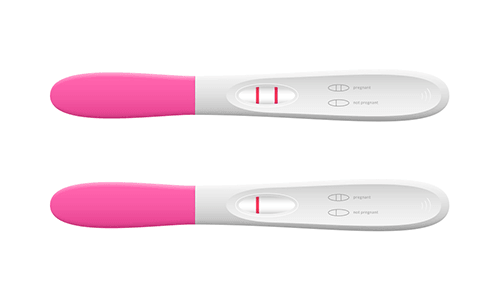What is infertility
by Hayat Medtour Fertility treatment in Iran | IVF in Iran | HayatWhat is Infertility ?
Infertility is defined as the inability to achieve pregnancy after one year of regular unprotected intercourse, however in female partners older than 35years; infertility is defined not to be achieving pregnancy after 6 months of unprotected intercourse.
How common is infertility?
The studies show that 10 to 15% of couples suffer from infertility problems. (On average one out of every 7 couples has an infertility problem), therefore it has became one of the most common diseases for couples between 20 to 45 years old. However, fortunately with the significant improvements within the last three decades in reproductive technology and infertility treatments, infertile couples are hoping of childbearing more than ever before.

What factors affect the infertility?
Different factors can affect the couple’s fertility. In general; infertility is due to the disorder in male and female.
Female Factors:
Ovulatory Dysfunction
Studies show that about 40% of couples are infertile due to ovulatory dysfunction. If a woman does not ovulate once a month, she may face with difficulty in conceiving.
Disorders such as PCOS, thyroid disease and other hormonal disorders can effect ovulation and lead to infertility. Women with overweight or underweight or having irregular menstrual periods usually have problems with ovulation and fertility.
Damaged or blocked fallopian tubes
Fallopian tubes also known as uterine tubes. Uterine tubes are two tubes attached to the uterus in which sperm and ovum are usually combined. Blocked or damaged tubes can lead to infertility or ectopic pregnancy.
Patients affected with endometriosis, and those having pelvic surgery or have sexually transmitted diseases are more likely to have damaged tubes. Fallopian tubes obstruction and adhesions around the tubes and ovaries are factors of 30-35% of infertility.
Uterine and cervical disorders
The condition of cervix which is the lower part of the uterus can affect infertility, although this is rarely the only reason for infertility. Uterine problems can interfere with implantation or increase the probability of abortion. Damaged uterus tissue, uterine polyps, uterine fibroids or abnormal uterine shape are the possible uterine disorder.
Female age
Woman’s age has many impacts on her ability to have childbearing, especially if she is in her 30s and 40s. Chance of fertility per month are 25 to 30% for a healthy woman in her 20s or early 30s, but this chance is reduced at age 40 to 10% or less.

Male factors
In about one-third of infertility cases are due to male infertility. In the remaining of one- third of cases, infertility occurs because of combination of male and female factors. Male infertility can be due to an inability to produce or ejaculate sperm. The semen quality is also important and it is evaluated by the amount, motility and shape of the sperm.Some factors can affect sperm quantity or quality.For example, diabetic men may have disorder in ejaculation or men with cystic fibrosis may have an obstruction that prevents ejaculation or sperm release.

Unexplained infertility
In some cases (more than 10% of infertile couples), there is no obvious reason for infertility, which is idiomatically referred to unexplained infertility.
Methods of Infertility diagnosing
From the beginning step of infertility assessment, the causes of infertility should be considered in both men and women.Therefore; both couples should be present during the assessment and visits. Each couple may present information and views that the other does not provide or remember. Moreover, the presence of both couples in each session of visit gives them the possibility of better understanding of the information, options, and recommendations offered by the doctor in order to receive the answers to each of their questions directly and discuss about them. Consultation with an infertility specialist during the infertility treatment process is essential and it should be considered at various stages of evaluation and treatment.
Regular visits not only help to review, evaluate the results and provide the necessary recommendations, but also they ensure the couples confidence in settling all medical, emotional and financial needs in a timely manner.
Basic evaluation and management the infertile couples
Assessment the infertility causes
- This stage begins with the detailed history and physical examination. in more cases the specific causes of infertility are identified by existing sign and symptoms. Therefore, based on the most likely factor or factors of infertility, the treatment process initiated.
- The initial work up of the infertile couples consisted ;Pap smear, blood group, RH factor, Indirect Coombs in women with negative blood group, anti-rubella antibodies in serum and, if necessary, screening for sexually transmitted infections.
- As 35% of infertility is due to male factors, so the causes of male infertility should be investigated, and semen should be analyzed in the primary assessments. If the initial results of semen are ambiguous, further analysis should be performed by referring to the urologist.
- In addition to examining male factors, female’s factor must also be considered which including as below:
- Ovarian Factor:The occurrence or lack of ovulation can be determined in different ways. All of the tests are based on hormone events that determine the normal cycle of ovulation. All of these test are useful and not necessarily the best. If the anovulation is the only problem for infertility, most couples can only become Pregnant by stimulating the ovulation.
- Uterine factor:The anatomical and functional disorders in uterus are a relatively common cause of infertility and always should be considered in evaluations.There are various methods for assess the uterus which each method has its advantages and disadvantages. Each evaluation method is selected depending on the individual needs and requirements
- Tubal Factor:The tubal disorders and the adhesion around the tubes and ovaries can be assessed by specific tests.
- If the overall infertility assessments do not identify the cause of infertility, it is called unexplained infertility.In patients suffering from this type of infertility, the following criteria are necessary:
- Normal spermogram
- Normal ovulation
- Normal uterine cavity
- Open fallopian tubes
One of the most likely causes of infertility is a disorder in the gametes or fetal implantation which there is no valid test to detect them. But undoubtedly, most cases of unexplained infertility are due to a natural decline in fertility as a result of aging, which is more common in women over 35 years.

When should I refer a doctor for infertility treatment?
As general, in case a couple fails to become pregnant within 12 months of trying to conceive, they should refer to a doctor to determine the reasons of infertility. Females older than 35 years should refer to the infertility specialist after 6 months of trying and not getting pregnant. If a female under 35 years old having a family history of premature menopause or other problems that can cause premature menopause, they should refer to infertility specialist as soon as possible for infertility counseling.
In cases of irregular menstruation, the risk of fallopian tube injury; a history of diseases such as testicular problems in male childhood and treatment with anticancer drugs, the infertile couples should be examined for appropriate evaluations.
For more information on the infertility treatment process and fertility treatment methods like IVF in Iran and IUI in Iran, you can contact The HAYAT professionals through the free consultation page.
Sponsor Ads
Created on Dec 10th 2019 11:27. Viewed 368 times.



